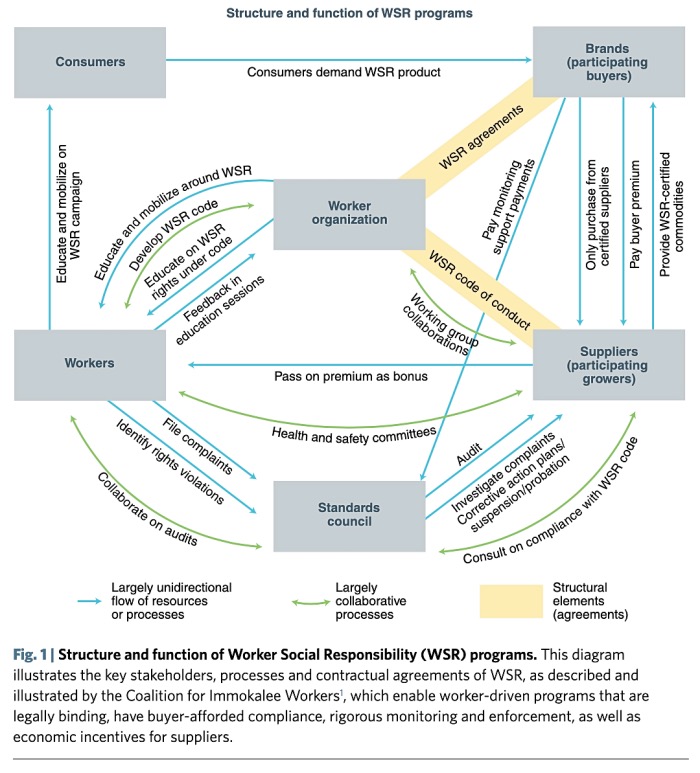
Authors: “True cost of [dignified] labour must be worker-defined.”
Unique team of academics and Worker-driven Social Responsibility practitioners pens extended letter to the editor of the peer-reviewed scientific and technology research journal, Nature.com, calls for researchers studying the “True Cost Accounting” of “decent” labor systems to “lend their eyes and ears to the worker communities already creating solutions” to gain a real understanding of the human cost of exploitation and the economic value of eliminating longstanding abuses and elevating working conditions in corporate supply chains…
Authors: “Two distinct but related programs in the USA [the Fair Food Program and the Milk With Dignity Program] have demonstrated that it is possible to end longstanding abuses, ranging from forced labour to sexual harassment and assault; improve health and safety; raise wages; ensure decent housing; provide protection from employer intimidation and retaliation; and holistically elevate the decency of work.”
How do you put a value on the elimination of rape in the workplace?
That is the question facing economists and other academic researchers attempting to apply the “True Cost Accounting” framework to the food industry, and to the unprecedented gains achieved by the Fair Food Program, the Milk With Dignity Program and other Worker-driven Social Responsibility initiatives in corporate supply chains. True Cost Accounting is defined as:
… a new type of bookkeeping that does not just look at the usual financial values within a company, but also calculates the impacts on natural and social capital; or said differently, it calculates the impacts on the natural and social environment in which the company operates. These impacts are calculated in monetary terms, so the amounts can be incorporated in the True Cost books. The “hidden costs” of production, which were externalised in the old system, are made visible and internalised.
While most costs of any given corporation’s, or economic sector’s, business operations are relatively straightforward to calculate, others — including those typical of abuses hidden in the farm labor economy for decades, such as widespread forced labor, sexual harassment and assault, and physical violence — are far thornier to assess and have never been adequately accounted for in traditional economic analyses of our modern food production and distribution economy. The ignorance of those costs — willful or otherwise — has contributed to the continued exploitation of workers at the base of corporate supply chains in the food industry for generations, as the true costs of planting, growing, harvesting and transporting food have landed on the shoulders of those least able to bear them (and least able to shed them onto others in the supply chain): low-wage farmworkers.
In other, simpler terms… Farmworkers across the US agricultural industry — and to an even greater extent, farm laborers in poorer countries such as Mexico, Guatemala and Haiti — have been beaten, raped, and robbed at work for generations, while economists studying the industries in which they work, and investors and corporations deriving billions in profits from their labor, have turned a blind eye to their exploitation.
Until now.
Click through below to read our analysis of this powerful letter!
